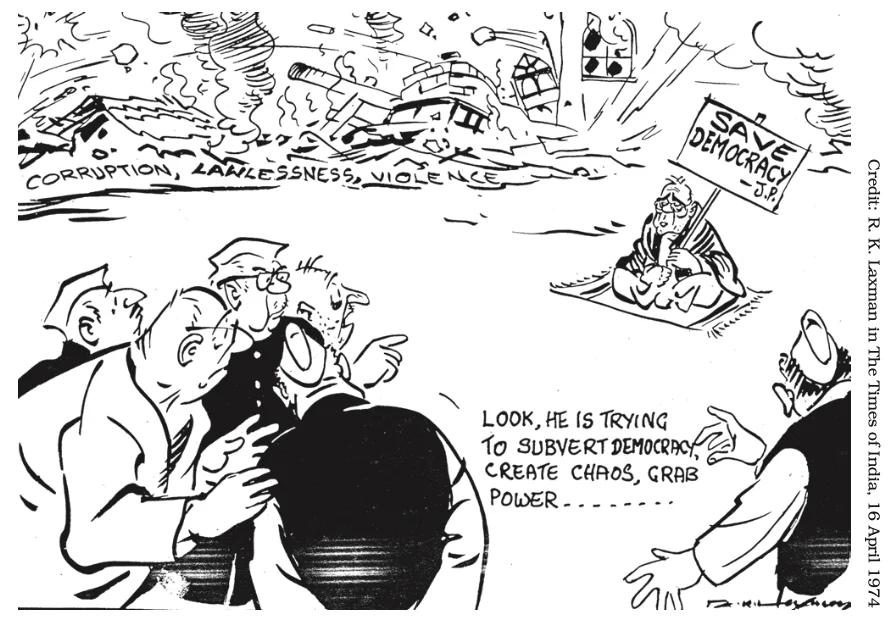![]() 26 Jul 2024
26 Jul 2024
India’s democratic journey post-independence has been tumultuous, presenting various challenges and lessons for its diverse population. The period following 1967, marked primarily by the leadership of Indira Gandhi, serves as an emblematic testament to the resilience and complexities of India’s democracy. Here we shed light on crises of democratic order that unfolded, diving deep into contexts that led to a declaration of Emergency, its implications, political milieu post-emergency, and stalwarts who played pivotal roles during this era.
Dominant Leadership: The period post-1967 saw Indira Gandhi as a dominant leader with significant popularity.
Congress’ Political Promises: In 1971, the Congress party promoted the slogan “garibi hatao” (remove poverty). Despite the promise, socio-economic conditions showed minimal improvement post-1971-72.

Movement in Gujarat (Refer to Figure 6.2):

Railway Strike of 1974:
|
| Must Read | |
| Current Affairs | Editorial Analysis |
| Upsc Notes | Upsc Blogs |
| NCERT Notes | Free Main Answer Writing |
In conclusion, the 1970s crisis, marked by socio-economic challenges and political unrest, led to Emergency, showcasing India’s democratic vulnerabilities. The movements in Gujarat and Bihar, conflicts between judiciary and executive, and Indira Gandhi’s controversial rule reshaped India’s political landscape, highlighting the necessity for strong democratic institutions.
| Related Articles | |
| INDIAN PARLIAMENT | Indira Gandhi |
| Constitution: A Living Document | Analyze the socio-economic factors |
<div class="new-fform">
</div>